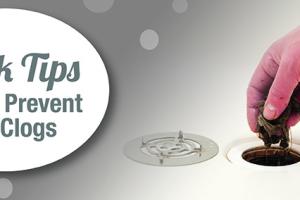Ultimate Guide to Preventing Hair Clogs: Tips & Tricks for a Clear Drain

-
Quick Links:
- Understanding Hair Clogs
- Common Causes of Hair Clogs
- Preventative Measures
- Tools and Products for Prevention
- Step-by-Step Guide to Cleaning Drains
- Case Studies and Real-Life Examples
- Expert Insights on Hair Clogs
- Statistics on Hair Clogs
- FAQs
Understanding Hair Clogs
Hair clogs are one of the most common plumbing issues faced in households today. They occur when hair strands accumulate and bind with soap scum, grease, and other debris in the pipes. This buildup not only leads to unpleasant odors but can also cause backups that disrupt daily routines.
Common Causes of Hair Clogs
Understanding the causes of hair clogs is essential for prevention. The primary culprits include:
- Excessive Hair Shedding: Daily grooming can lead to hair falling into drains.
- Shower and Bath Usage: Hair tends to wash off the body and into the drain during baths and showers.
- Improper Drainage Systems: Some drainage systems are not designed to handle large amounts of hair.
Preventative Measures
Here are several effective strategies to prevent hair clogs from developing:
- Use Drain Strainers: Install mesh strainers over drains to catch hair before it enters the pipes.
- Regular Cleaning: Clean the strainer and drain regularly to prevent buildup.
- Limit Hair Washing: Try to reduce the frequency of washing hair to minimize hair loss into drains.
Tools and Products for Prevention
Utilizing the right tools and products can significantly reduce the chances of hair clogs:
- Drain Cleaning Tools: Use tools like a plumber's snake or drain auger to remove clogs.
- Enzymatic Drain Cleaners: Opt for biological cleaners that break down organic matter.
- Hair Catchers: Consider installing hair catchers in bathtubs and shower drains.
Step-by-Step Guide to Cleaning Drains
If you find yourself facing a clog, follow these steps to effectively clear it:
- Gather Your Tools: You will need a plunger, plumber's snake, and a bucket.
- Remove the Drain Cover: Unscrew or lift off the cover to access the drain.
- Use the Plumber's Snake: Insert it into the drain and twist to break apart the clog.
- Flush with Water: After clearing, run hot water down the drain to flush out debris.
- Replace the Cover: Reattach the drain cover securely.
Case Studies and Real-Life Examples
Real-world examples can provide insight into effective clog prevention strategies. For instance, a family in California installed strainers, leading to a 75% reduction in plumbing issues over a year. They reported fewer service calls and significant savings on plumbing repairs.
Expert Insights on Hair Clogs
Experts recommend a combination of preventive measures and regular maintenance. According to plumbing professionals, "Regularly cleaning your drains and using strainers can save homeowners significant time and money in the long run."
Statistics on Hair Clogs
According to a report by the American Society of Plumbing Engineers, hair clogs account for over 50% of all plumbing-related calls. This highlights the importance of effective prevention methods.
FAQs
1. What is the best way to prevent hair clogs?
Using drain strainers and regularly cleaning your drains are the best ways to prevent hair clogs.
2. How often should I clean my drains?
It's advisable to clean your drains at least once a month to prevent hair buildup.
3. Can hair clogs cause serious plumbing issues?
Yes, hair clogs can lead to backed-up drains, which may require professional plumbing services.
4. Are chemical drain cleaners effective against hair?
Chemical drain cleaners can help, but they may not be the best solution for hair clogs. Enzymatic cleaners are often recommended instead.
5. What tools do I need to clear a hair clog?
A plumber's snake, a plunger, and a bucket are essential tools for clearing hair clogs.
6. How can I reduce hair shedding in the shower?
Using hair treatments and reducing the frequency of washing your hair can help minimize shedding.
7. Is it safe to use a home remedy for hair clogs?
Home remedies like baking soda and vinegar can be safe and effective for minor clogs.
8. Should I call a plumber for a hair clog?
If you cannot clear the clog using home methods, it may be time to call a plumber.
9. Can hair clogs affect my entire plumbing system?
Yes, if not addressed, hair clogs can lead to more serious plumbing issues throughout your home.
10. What are the long-term effects of not addressing hair clogs?
Ignoring hair clogs can lead to more severe plumbing issues, costly repairs, and potential water damage.
Conclusion
Preventing hair clogs is an essential aspect of home maintenance. By adopting simple yet effective preventive measures, you can significantly reduce the likelihood of clogs, save money on plumbing repairs, and maintain a healthy plumbing system.
References
Random Reads
- How to use smart view on iphone or ipad
- How to install vertical metal siding
- How to install tyvek
- How to replace broken glass in a picture frame
- How to play video games
- How to plug mouse holes
- How to stop getting voicemail on iphone
- Mastering fast weapon switching counter strike
- Mastering fifa on wii
- Ultimate guide to clean epson printer heads